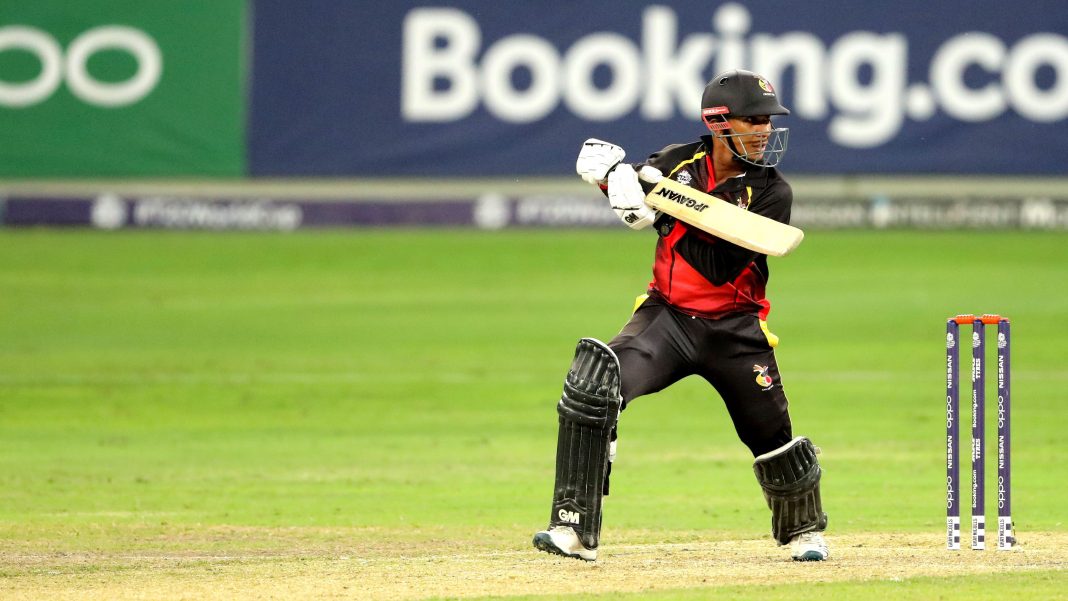October 1, 2020.
You wake up at 7:30 in the morning to check your phone and the news you longed for is there as a notification:
“BREAKING: Men’s T20 World Cup to go ahead, all 16 teams to play in Australia”
You jump out of bed, not knowing how to celebrate given the lack of things to fist pump about in recent months. At the same time, players around the world rejoice after hearing from their national boards. After months without playing a match or even seeing their teammates, they are soon to be thrust in front of thousands of people, and millions watching on television.
This hypothetical scenario is optimistic, but still a possibility with the International Cricket Council mulling over the chances of the tournament running this week. All ICC events due to take place before June 30 have been postponed, with events after that date ‘continually monitored’ according to a press release last month. Qualification for future World Cups for both men and women are already impeded, though the T20 World Cup’s mid-October start tempts the mind to dream.
For now, cricketers pencilled in to play are forced to draw on their self-discipline. Full-time, Full Member players have tried to keep the mind ticking, innovating their own training routines. For players in emerging nations though, it’s normal transmission in some ways. Cricket is seldom a dominant source of their income, and coming up with drills and routines without being blessed with state-of-the-art facilities is par for the course. For Papua New Guinea players, shuttle runs on dilapidated basketball courts keep the blood pumping. For Namibia’s core, training involved circuits using play equipment until a restricted lockdown was put in place in late March.
Namibia opener Stephen Baard, who played a pivotal role last year in both reclaiming ODI status and qualifying for the T20 World Cup, explains that individual fitness is kept through team activities, though innovation is needed when attempting to hone cricketing skills.
“Personally, I have been placing cricket balls on cones and then training certain shots and maintaining my position. Some players have family members giving them under arm throws to keep hitting balls into the ground and feeling bat on ball,” Baard told Emerging Cricket in March.
Making the most of the hand they’ve been dealt, Associate cricketers are masters of improvisation, and their creativity has always been tested to squeeze the best out of themselves. Players in non-Full Member teams are forced to be the most self-disciplined in the sport, because the alternative is usually surrendering; giving up the dream of international cricket altogether for the safety of a stable income. For many, it is this drama, and the context of every match meaning something, that lures people into following the game at the emerging level. On the morbid side, the domino effect of a series of defeats can lead to a loss of status, a loss of funding, and therefore the loss of jobs. It makes a bilateral series between Test-playing teams tame by comparison. Associate players can face far more threatening pressures.
Papua New Guinea enjoyed the same successes of re-capturing ODI status and qualifying for the T20 World Cup though have gone winless in the new Cricket World Cup League 2, which acts as an early qualification process for the 2023 50-Over World Cup. For PNG all-rounder CJ Amini, who also spoke to Emerging Cricket last month, the COVID-19 crisis has not been an excuse to focus on the T20 format, nor a chance to gloss over their 50 over struggles.
“We’ve lost eight from eight and with the (T20) World Cup still months away our focus is still on 50 over (cricket). We’ve worked really hard to be where we are with T20 and although there are still a lot of things to improve on we try to focus on one goal at a time. So at this stage probably the 50 overs and then slowly build towards T20.”
In terms of their physical program, the men known as the Barramundis have come off the back of a 10-week preseason program, and are regarded as one of the fittest outfits in the emerging world. Amini reiterates that not being together is no excuse to avoid more hard yards.
“We just finished our testing before we all got sent home so after this break we’ll have (individual) fitness testing just to see if everyone has been doing the program.”
With this constant pressure to keep their discipline, and reflecting on some of the champion performances by amateur and semi-professional cricketers over the years at global events, could all of COVID-19’s disruption be a leveller for teams participating in the first round? Associate member nations historically starve for international cricket in comparison to their high-end Full Member rivals, but as a consequence of the world we live in at present, we have an empty calendar and thus a more even playing field.
Let’s say that the T20 World Cup does go ahead, with no change to its current schedule. No international cricket is played before the tournament and the teams have carried out individual training based on social distancing. Warm-up matches are hastily put together, with visas processed at the last possible moment. Teams in the first round will have three more competition matches under their belt in comparison to the rest of the field from the Super 12 phase, as teams waiting in the second stage of competition struggle to come up with a contingency plan. That’s crucial time in the middle for the players who advance to take on the best in the world, and finally a positive hand, albeit a hypothetical one, dealt to the teams challenging the game’s hegemony.
With two or three wins under their belt, qualifiers for the Super 12 will be in a groove, a catalyst for a deep tournament run. Several underdog teams have pulled off giant-killings in the past even without this potential advantage, but none have been able to piece together consecutive wins together to mount a challenge for a trophy. It sounds ambitious, but strange circumstances yield strange results. The fickleness of T20 means it can take just one innings or bowling spell to swing things, though the overall rustiness across the board for Super 12 teams could mean that any of the teams waiting to play could struggle to get out of first gear.
Bowling is likely to dominate the tournament given a lack of match practice, a lesson all too familiar for emerging nations already. Teams with a thin domestic system and a lack of matches rely on bowling performances to stay competitive, though this is more down to how players learn, rather than how they play. The muscle memory of running in and bowling is easier to emulate than the reactive mechanics of batting. Batting, or specifically the way players learn how to bat is a prime example. Coaches and players discuss the importance of time in the middle by being mentally prepared for taking things ball by ball, to eventually piece together an innings. No net session can truly simulate this. The consequences of a good or bad delivery show for a bowler, but when the ball hits the side of the next, we don’t understand the consequences of the shot. A cover drive may never beat a fielder on the circle and a ball in the air may have been caught in the deep. There is no pressure on the player batting, and no fear of losing a wicket. The result of cancellations and isolation before-hand means a hard reset for a lot of players at the T20 World Cup, who now need to form new habits and learning patterns, without the privilege of coveted time in the middle.
As over 86000 witnessed Australia’s women overcome India at the MCG, the dream result now would be to have this near-apocalyptic pandemic bookended by two global cricket events. To see any of the teams win a World Cup on November 15 would be, in no exaggeration, an achievement for humanity. But who is the best-equipped to be the team hoist the trophy? A Full Member player deprived of all his training and time in the middle testing himself against the world’s best? Or the wily Associate grinder, equipped with the self-control, innovation and experience to adapt and overcome? For all of our turmoil and against the odds, this World Cup could throw up one hell of a Cinderella Story.
So, for the love of everything good in this world, stay home if you want to see something special.
Keep up with the emerging game through our Facebook and Twitter pages.
Looking for audio content on the emerging game? Add the Emerging Cricket Podcast to your favourites on Apple, Spotify and Podbean.
Want extra Emerging Cricket content? Contribute to the Emerging Cricket Patreon cause from as little as $2 a month. Sign up here!







